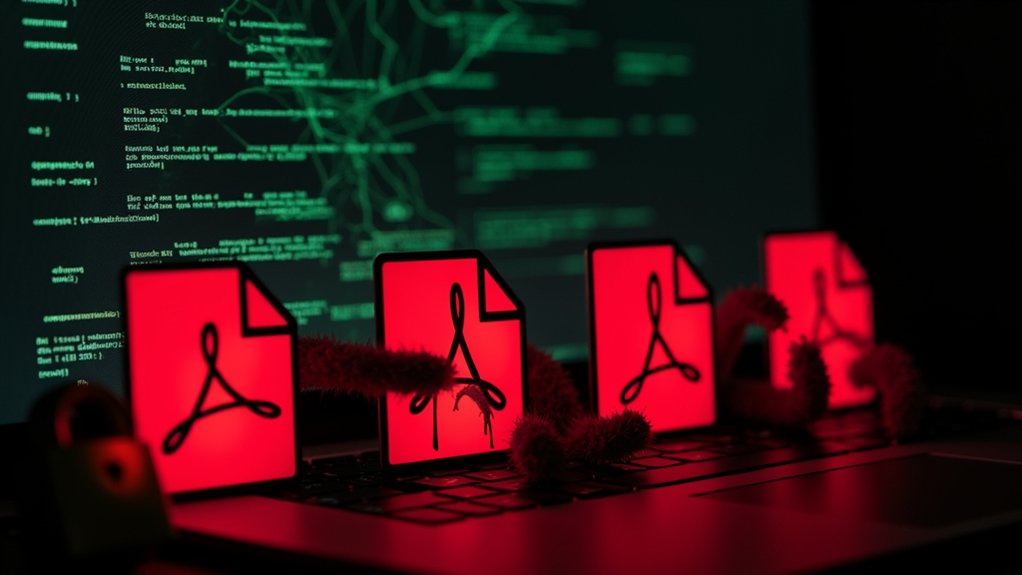The ubiquitous PDF document format, long trusted by organizations worldwide, has emerged as an increasingly potent weapon in cybercriminals‘ arsenals. With cybercrime costs projected to reach $10.5 trillion annually by 2025, malicious actors are capitalizing on PDF files’ perceived legitimacy to bypass traditional email security filters and exploit user trust. The format’s widespread adoption in both personal and professional contexts creates an ideal attack vector, particularly as organizations struggle with legacy PDF readers and insufficient patch management protocols. Phishing accounts for over a third of all cyberattacks, with PDF-based deception playing a significant role.
PDFs have become a dangerous weapon for cybercriminals, exploiting trust and technical vulnerabilities while organizations struggle to keep pace with emerging threats.
Recent data from the FBI’s Internet Crime Complaint Center reveals a 22% surge in cybercrime complaints from 2022 to 2023, with document-based attacks contributing considerably to this increase. Cybercriminals employ sophisticated techniques, including hidden JavaScript exploits, embedded hyperlinks to phishing sites, and zero-day vulnerabilities in PDF readers. These attacks often remain undetected until after compromise, leading to considerable operational disruptions in 70% of breaches and contributing to the global average breach cost of $4.88 million in 2024. Man-in-the-middle attacks have become increasingly common in intercepting PDF transmissions between organizations.
The effectiveness of PDF-based attacks is amplified by the current business environment, where remote and hybrid work settings have expanded the attack surface through unmanaged endpoints. Organizations face particular challenges as high volumes of inbound PDF attachments increase staff exposure to potential threats, as well as supply chain compromises via shared documents present growing concerns for security teams.
The rise of Ransomware-as-a-Service has further commoditized the distribution of document-based malware. Technical sophistication in PDF exploitation continues to evolve, with attackers utilizing obfuscated payloads to evade detection by endpoint protection platforms. Malicious actors utilize macros, autofill forms, and embedded code to execute unauthorized commands, as social engineering tactics exploit the inherent trust users place in familiar document formats.
This combination of technical exploitation and psychological manipulation, coupled with insufficient user training on document-based threats, has established PDFs as a premier vehicle for conducting sophisticated cyber attacks in today’s digital environment.









